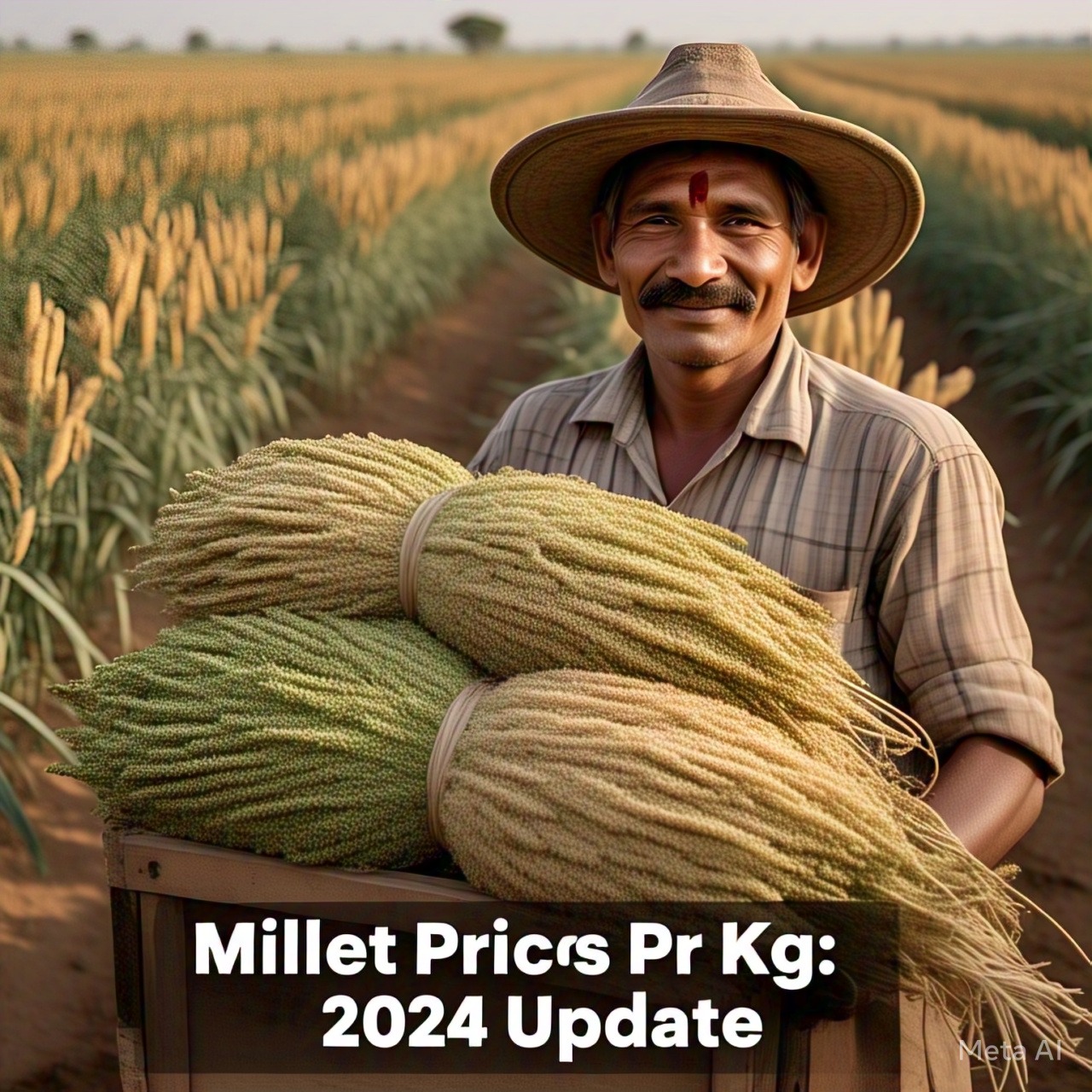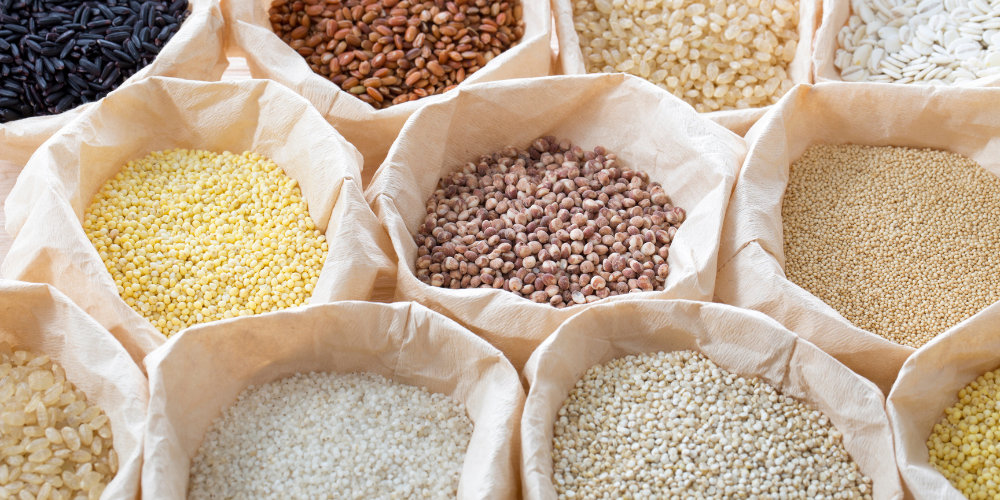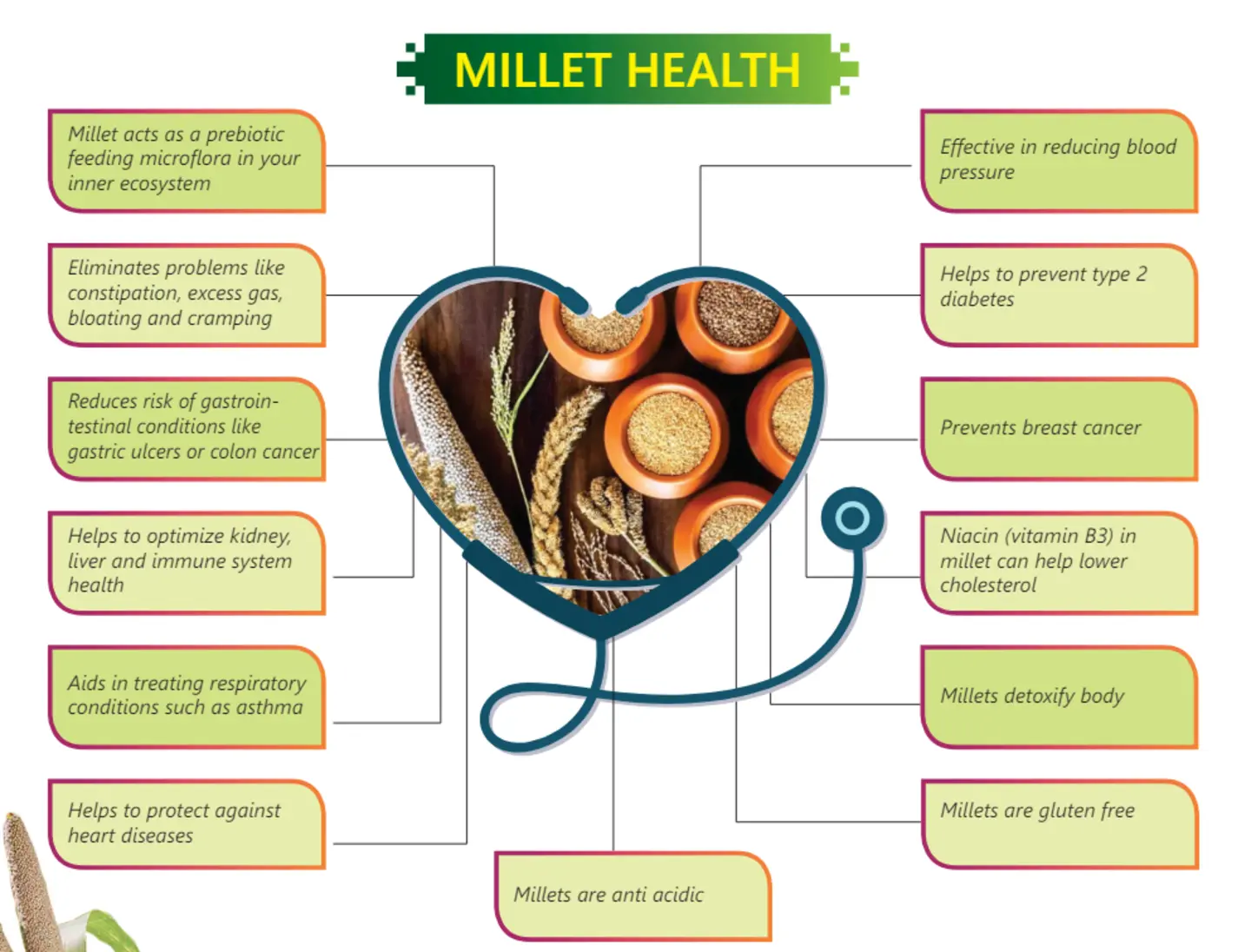Millet Prices Per Kg: 2024 Update
Get the latest millet prices per kg and market trends to make informed buying and selling decisions!
Introduction

Millets are gaining popularity due to their high nutritional value and health benefits. Consumers are now keen on knowing the millets price per kg to make informed purchasing decisions. This article provides an updated price range, factors affecting costs, and the best places to buy millets in 2024.
Millets: A Rising Superfood in India

Millets have seen a resurgence in popularity, especially in India, due to their incredible nutritional benefits and sustainable farming practices. These ancient grains are packed with fiber, protein, and essential minerals, making them a preferred choice for health-conscious individuals. As more consumers shift towards natural and organic foods, millets are replacing refined grains in Indian households. This growing interest has led many to inquire about millets price per kg, ensuring they get the best quality at the right price.
Understanding Millet Pricing Trends

The cost of millets varies based on multiple factors such as demand, production, and regional availability. Different types of millets, including foxtail, barnyard, kodo, and little millet, each have distinct price ranges depending on their nutritional content and cultivation process. With an increasing number of organic and specialty food stores offering millets, the millets price per kg is also influenced by certification standards, brand reputation, and packaging quality. Keeping track of price trends helps consumers make informed buying decisions while ensuring affordability.
Factors Affecting Millet Prices
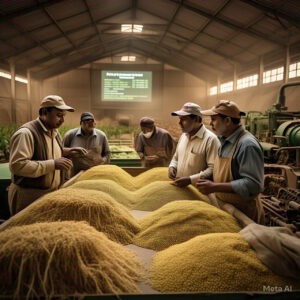
Several factors impact the millets price per kg, making it essential for buyers to understand the pricing structure. The method of cultivation plays a significant role, with organic millets being priced higher due to eco-friendly farming techniques. Additionally, transportation and storage costs affect prices, especially when millets are sourced from remote farming regions. Government policies, subsidies, and support programs also influence the overall market rate, sometimes leading to fluctuations in millet costs.
Where to Buy Millets at the Best Price?

Consumers looking for the best millets price per kg have multiple options, including local markets, online stores, and direct-from-farm purchases. Buying from government-supported outlets or cooperative societies ensures fair pricing and high-quality millets. Online platforms often provide seasonal discounts, while wholesale markets offer bulk purchase benefits. By comparing prices across different sources, consumers can choose the most cost-effective option without compromising on quality.
Making Informed Decisions on Millet Purchases

With the increasing demand for millets, staying informed about the millets price per kg is essential for smart shopping. Checking for certifications, reading customer reviews, and understanding the various millet varieties can help buyers select the right product. Whether for daily consumption or bulk purchases, knowing price trends and quality indicators ensures that consumers get the best value for their money while adopting a healthier lifestyle.
Current Millet Prices Per Kg in India (2024)
In 2024, millet prices in India have experienced notable fluctuations influenced by factors such as demand-supply dynamics, production costs, and government policies. Below is an overview of the current prices per kilogram for various millet types:
|
Millet Type |
Price Per Kg (INR) |
Notes |
|
Foxtail Millet |
₹80 – ₹120 |
Prices vary based on quality and region. |
|
Little Millet |
₹90 – ₹130 |
Higher demand has led to increased prices. |
|
Barnyard Millet |
₹70 – ₹110 |
Prices influenced by limited cultivation areas. |
|
Kodo Millet |
₹60 – ₹100 |
Moderate pricing due to stable production levels. |
|
Proso Millet |
₹75 – ₹115 |
Prices fluctuate based on regional availability. |
|
Pearl Millet (Bajra) |
₹25 – ₹30 |
Reflects the Minimum Support Price (MSP) set by the government. |
|
Finger Millet (Ragi) |
₹42.90 – ₹55 |
Retail prices have risen due to increased demand and production costs. |
|
Sorghum (Jowar) |
₹33.71 – ₹34.21 |
MSP varies slightly between hybrid and Maldandi varieties. |
Factors Influencing Millet Prices:
- Demand and Supply Dynamics: Rising health consciousness has boosted millet consumption, leading to increased demand and higher prices.
- Production Costs: Factors such as labor, fertilizers, and irrigation impact the overall cost of millet cultivation, influencing market prices.
- Government Policies: The establishment of MSPs aims to ensure fair compensation for farmers, but market prices can exceed these due to demand-supply imbalances.
- Climate Conditions: Adverse weather events can affect crop yields, leading to price volatility.
The Impact of Demand and Supply on Millet Prices
The rising awareness of health and nutrition has significantly impacted the demand for millets in recent years. As more people switch to millet-based diets due to their high fiber and protein content, the market has responded with increased demand. However, the supply chain struggles to keep up with this demand, especially in regions where millet farming is still evolving. This mismatch between supply and demand directly influences millets price per kg, leading to periodic fluctuations. When production is insufficient to meet consumer needs, prices rise, making it crucial for governments and farmers to balance supply through better farming techniques and distribution strategies.
Production Costs and Their Influence on Market Prices
The cost of cultivating millets plays a major role in determining their market price. Several factors contribute to production costs, including labor wages, seed procurement, fertilizer expenses, and irrigation needs. Millets, though resilient crops, still require careful cultivation practices to ensure high yields. In some cases, farmers adopting organic farming methods face additional expenses, as they avoid chemical fertilizers and pesticides, leading to higher costs. These production-related factors push up the millets price per kg, making it essential for authorities to support farmers with subsidies and incentives to maintain affordability.
Government Policies and Their Role in Millet Pricing
To stabilize millet prices and support farmers, the government has implemented various policies, including Minimum Support Prices (MSP). The MSP ensures that farmers receive fair compensation for their crops, preventing exploitation by middlemen. However, due to high consumer demand and supply chain inefficiencies, market rates often exceed MSP, leading to price variations. Additionally, government initiatives such as subsidies for millet farming, research on high-yielding varieties, and incentives for organic cultivation play a crucial role in influencing the millets price per kg. Continuous policy improvements can help regulate millet pricing and promote wider accessibility.
The Effect of Climate Conditions on Millet Production
Millets are known for their climate resilience, but extreme weather conditions such as droughts, floods, and unpredictable monsoons can still affect their cultivation. When adverse weather patterns reduce crop yields, the supply chain suffers, resulting in price hikes. For instance, excessive rainfall can damage millet crops, leading to lower market availability and increased millets price per kg. Similarly, prolonged droughts can reduce production in key farming regions, further affecting supply. Investing in climate-smart agriculture, efficient irrigation techniques, and improved storage facilities can help stabilize millet production and prices.
The Need for Sustainable Millet Pricing Strategies
To ensure millets remain an affordable and accessible staple, a well-structured pricing strategy is needed. Encouraging sustainable farming practices, providing financial assistance to farmers, and improving supply chain infrastructure can help regulate the millets price per kg. Additionally, raising awareness about local sourcing and promoting direct farmer-to-consumer sales can reduce price markups caused by intermediaries. As millets gain popularity in both domestic and international markets, a balanced approach between production and pricing will be crucial to making these nutritious grains a long-term dietary staple.
Market Observations:
- Retail Markups: Despite MSPs, retail prices can be significantly higher. For instance, locally produced sorghum may fetch farmers around ₹18-23 per kg but is sold for ₹100 per kg in urban markets.
- Export Prices: In 2021, the export price per kilogram of millet from India was approximately $0.30 USD, indicating a stable trend in international markets.
Factors Affecting Millet Prices Per Kg
Several factors influence the millets price per kg, including:
1. Demand and Supply
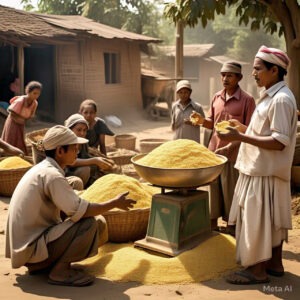
The millets price per kg is significantly impacted by the balance between demand and supply. With increasing consumer awareness about the health benefits of millets, demand has risen. However, limited production and inconsistent supply chains can drive up prices, making millets more expensive in certain regions.
2. Organic vs. Non-Organic
Organic millets are cultivated without chemical fertilizers or pesticides, making them a healthier choice. However, the process of organic farming is labor-intensive, and certification adds to the cost. As a result, organic millets price per kg is generally higher than conventional millets.
3. Location and Availability
The region where millets are grown and sold plays a crucial role in determining their cost. Areas with high millet production tend to have lower millets price per kg, while regions that rely on imports or transportation from distant farms may experience higher costs due to logistics expenses.
4. Government Policies and Subsidies
Government policies, subsidies, and procurement strategies directly impact millets price per kg. When the government supports millet farming through incentives, price stability is maintained. However, fluctuating policy decisions and inadequate farmer support can lead to price variations across markets.
5. Climatic Conditions and Crop Yield
The yield of millet crops is highly dependent on climatic conditions. Droughts, excessive rainfall, or poor soil conditions can lead to lower millet production, increasing the millets price per kg. Favorable weather conditions, on the other hand, result in better yields and more affordable millet prices for consumers.
6. Market Trends and Export Demand
The growing popularity of millets in international markets has led to increased exports from India. This global demand can influence domestic millets price per kg, especially if a significant portion of the harvest is allocated for export rather than local consumption. Additionally, seasonal demand fluctuations also contribute to price changes.
7. Processing and Packaging Costs
The final retail price of millets includes expenses related to processing, packaging, and branding. Processed millet products such as flour, ready-to-cook mixes, and value-added products often have a higher millets price per kg than raw grains due to the extra steps involved in making them consumer-friendly.
Where to Buy Millets at the Best Price?
1. Local Markets
One of the best places to find competitive millet prices per kg is local grocery markets. These markets often provide a variety of millets at affordable rates, especially in millet-producing states like Rajasthan, Karnataka, and Maharashtra. Additionally, purchasing from local stores supports small-scale farmers and ensures fresher produce.
2. Online Platforms
E-commerce platforms such as Amazon, Flipkart, BigBasket, and specialty organic food websites offer a wide selection of millets. Online purchases provide convenience, discounts, and doorstep delivery. However, buyers must check product descriptions, certifications, and customer reviews to ensure they get the best millet prices per kg.
3. Direct from Farmers
Purchasing millets directly from farmers or farm cooperatives can significantly reduce costs. Many government initiatives and NGOs promote farm-to-table practices, enabling consumers to buy chemical-free millets at reasonable rates. Some farmers even offer bulk discounts, ensuring lower millet prices per kg.
4. Government-Supported Outlets
Government-supported stores such as the Tribal Cooperative Marketing Development Federation (TRIFED) and Agricultural Produce Market Committees (APMCs) offer millets at fair prices. These platforms help stabilize millet prices while ensuring that farmers receive fair compensation for their crops.
5. Wholesale Suppliers
Bulk purchases from wholesalers, particularly in agricultural hubs, can result in better millet prices per kg. Many wholesalers supply to restaurants, food processing units, and large retailers at discounted rates. If you are looking for cost-effective millets for regular consumption or business use, wholesale markets can be a great option.
6. Organic and Specialty Stores
Organic food stores offer high-quality, pesticide-free millets. Though organic millets often come at a premium price, their nutritional value and purity make them a preferred choice for health-conscious consumers. Checking certification labels can help in ensuring authenticity while comparing millet prices per kg.
7. Cooperative Societies
Several cooperative societies promote millet farming and ensure fair trade pricing. Buying through these societies helps support sustainable agriculture and ensures better pricing for both farmers and consumers. These cooperatives often provide millets at lower millet prices per kg compared to mainstream retailers.
8. Weekly Farmers’ Markets
Many cities host weekly farmers’ markets where agricultural producers sell fresh, locally grown millets at reasonable prices. These markets allow direct communication with farmers, enabling buyers to negotiate the best millet prices per kg while learning more about the source and cultivation methods.
9. Export-Oriented Suppliers
For those looking to buy millets in bulk for business purposes, export-oriented suppliers provide another purchasing avenue. These suppliers focus on quality and competitive millet prices per kg, making them ideal for large-scale buyers.
10. Seasonal Sales and Discounts
Retailers and online stores often provide discounts on millets during festive seasons or health awareness campaigns. Keeping track of such offers can help consumers purchase millets at lower millet prices per kg, ensuring savings while maintaining a nutritious diet.
How to Choose Quality Millets?

1. Appearance and Color
Good-quality millets should have a uniform color and appear clean. Discolored or dull-looking grains may indicate poor storage or age, affecting taste and nutrition.
2. Size and Texture
Check for uniformity in grain size. Uneven or broken grains might indicate poor processing and lower quality, impacting cooking results and millet prices per kg.
3. Purity and Cleanliness
Millets should be free from dust, dirt, stones, and insect infestations. Properly cleaned and graded millets ensure better quality and value for money.
4. Organic Certification
For those looking for chemical-free options, always check for organic certification. Certified organic millets are cultivated without pesticides and artificial fertilizers but are often priced higher in the millet prices per kg range.
5. Moisture Content
Excess moisture can lead to fungal growth and spoilage. Ensure that the millets you buy are dry and properly stored to enhance shelf life.
6. Smell and Freshness
Fresh millets have a mild, nutty aroma. Any foul or moldy smell indicates that the grains are old or improperly stored, which can affect both nutrition and millet prices per kg.
7. Brand Reputation
Buying from reputable brands or trusted suppliers ensures better quality control and customer satisfaction. Brands that invest in hygienic packaging and quality control often provide better millet prices per kg.
8. Packaging Quality
Millets should be packed in airtight, moisture-resistant bags to prevent spoilage. Good packaging preserves the freshness of the grains and affects the overall millet prices per kg.
9. Expiry Date and Shelf Life
Always check the packaging date and expiry details. Fresher millets provide better taste and nutrition. Older grains tend to lose their flavor and quality over time.
10. Cooking Performance
Lastly, cooking tests can help determine millet quality. Good-quality millets cook evenly, have a pleasant texture, and enhance the flavor of dishes, justifying their millet prices per kg.
Future Trends in Millet Prices Per Kg

The future of millet prices in India is influenced by various economic, environmental, and policy-driven factors. Here are the key trends expected to shape the millet prices per kg:
1. Increased Government Support
The Indian government has been actively promoting millets through various initiatives, including subsidies for millet farmers and inclusion in public distribution systems. These efforts may help stabilize millet prices per kg and ensure affordability for consumers.
2. Rising Export Demand
With the growing recognition of millets as a superfood globally, export demand is on the rise. Countries in Europe, North America, and the Middle East are increasingly importing Indian millets, which may push millet prices per kg higher in the domestic market.
3. Climate Change Impact
Climate change affects millet yields, influencing their supply and pricing. If adverse weather conditions persist, the production may fluctuate, causing spikes in millet prices per kg.
4. Expansion of Organic Farming
The demand for organic millets is growing, leading to an expansion in organic millet farming. Since organic produce tends to have a higher millet prices per kg due to labor-intensive cultivation and certification costs, prices are expected to reflect this shift.
5. Technological Advancements in Agriculture
Advancements in millet processing, storage, and farming techniques may lead to better yield and efficiency. This could help reduce production costs and stabilize millet prices per kg over time.
6. Shift in Consumer Preferences
Health-conscious consumers are increasingly shifting towards millets as a staple diet, driving up demand. As demand grows, producers might introduce more value-added millet products, impacting millet prices per kg.
7. Increased Private Sector Investment
Many food processing companies and startups are investing in millet-based products, leading to more competitive pricing. The entry of big brands may influence supply chains and affect millet prices per kg in both wholesale and retail markets.
8. Policy Changes and Minimum Support Price (MSP)
The government may introduce a Minimum Support Price (MSP) for millets, ensuring stable prices for farmers while controlling retail fluctuations in millet prices per kg.
9. Sustainable and Regenerative Agriculture
More farmers are adopting sustainable and regenerative agriculture methods to grow millets, which could positively impact long-term supply and affordability of millet prices per kg.
10. Fluctuations in Global Grain Markets
Since millets are an alternative to mainstream grains like wheat and rice, their prices may fluctuate based on trends in the global grain market. Any changes in global agricultural policies, trade agreements, or shortages may impact millet prices per kg.
Conclusion
Understanding millets price per kg helps consumers make informed choices while purchasing. By considering factors like quality, demand, and supply sources, one can buy the best millets at the right price. Stay updated with market trends to get the most value for your money!

